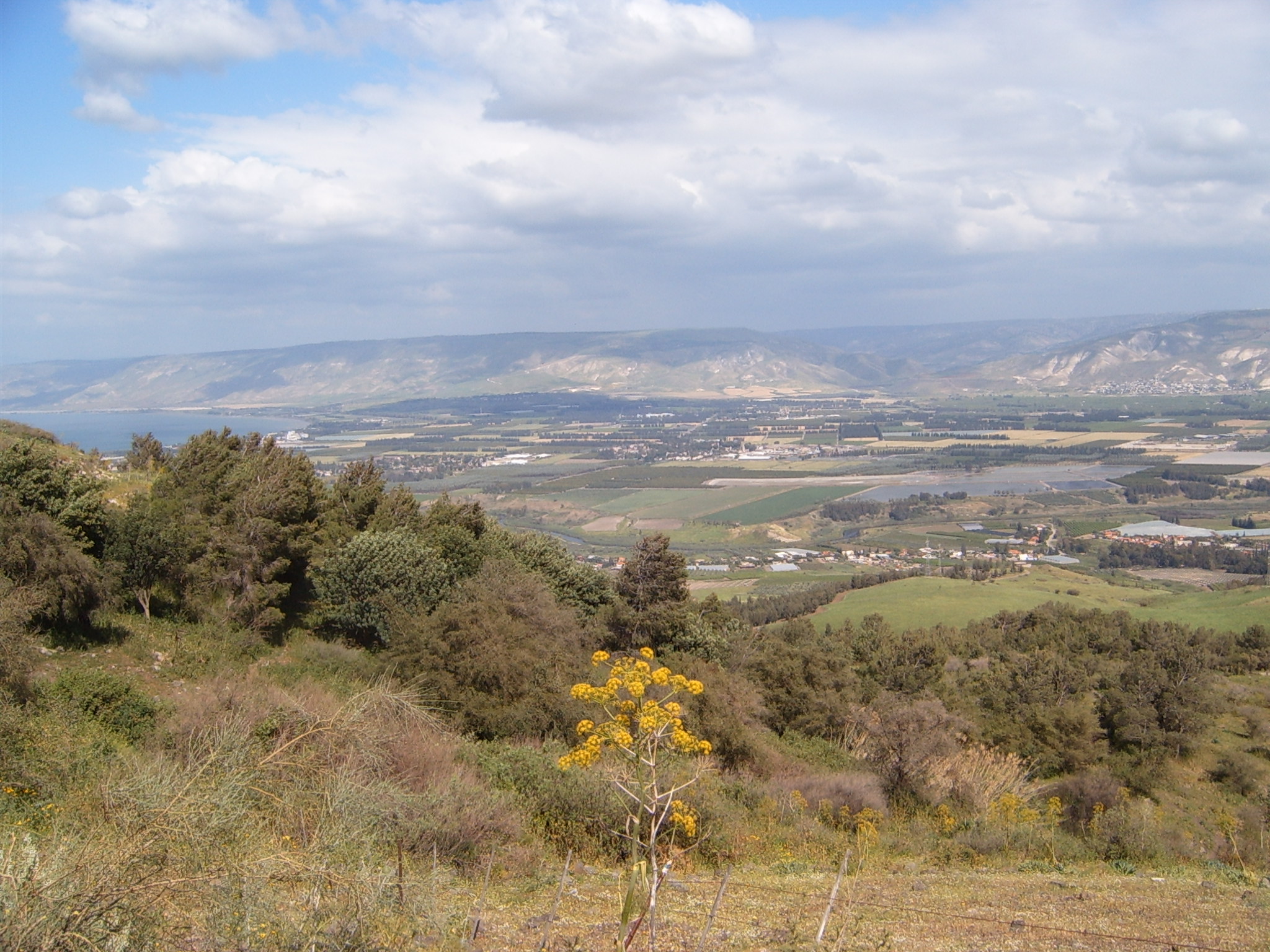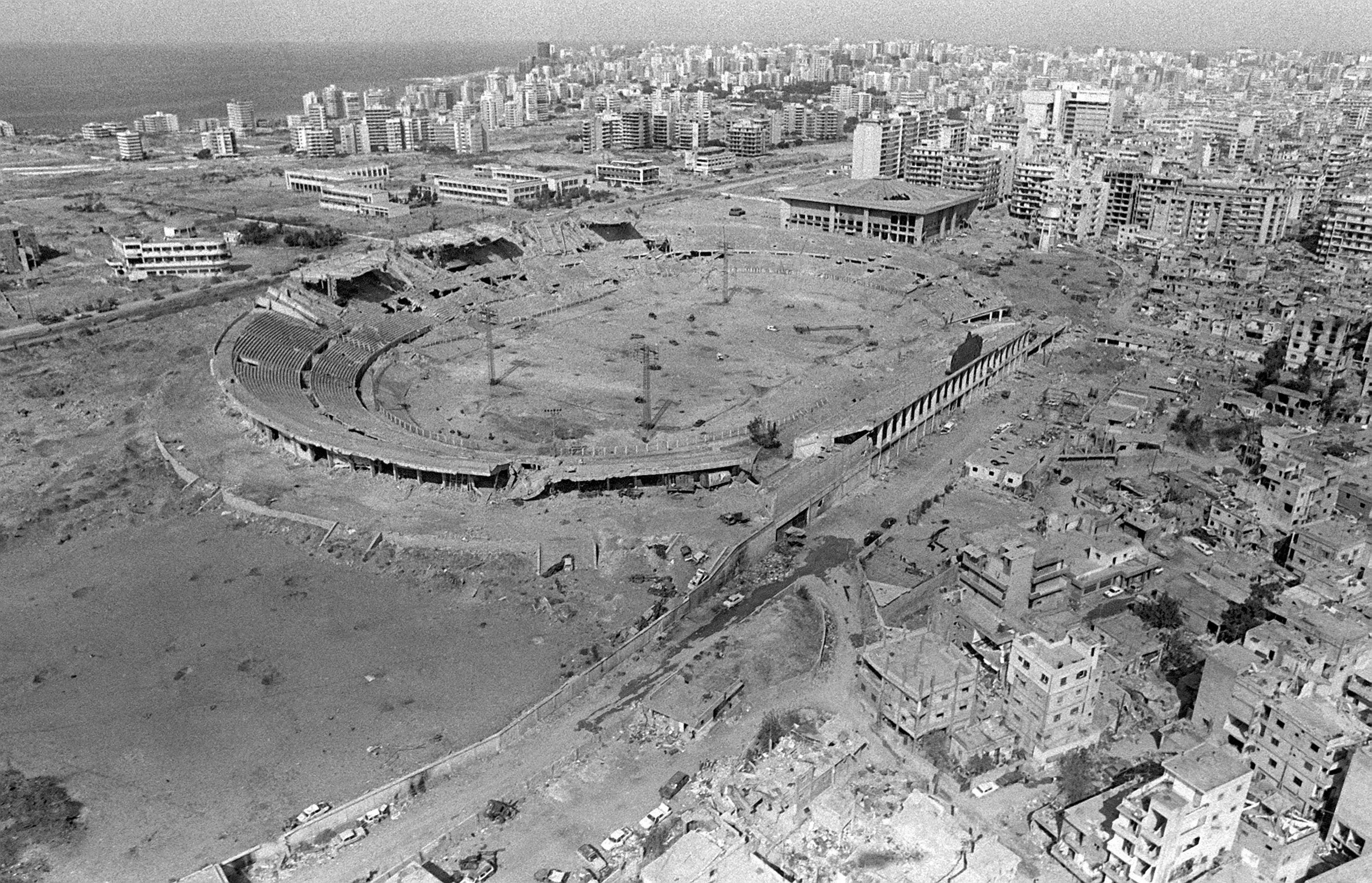|
500th Brigade
The Israeli Armor Corps 500 Brigade, also known as the Kfir (Young Lion) Formation, was a regular-service tank brigade that existed from 1972 to 2003. It was originally composed of three battalions: the Romach (429), Se'ara (430), and Gur (433) battalions. During the Yom Kippur War, it fought in the battle over the city of Suez under the 162nd Division, and was led by Colonel Aryeh Keren. Primarily relying on the Magach tank, it was situated in the Sinai border, until the beginning of the withdrawal following the Israel-Egypt Peace Treaty, when it was moved to the Jordan valley. During the 1982 Lebanon War, it fought in the central front (again under the 162nd Division), where it took part in the Siege of Beirut The siege of Beirut took place in summer 1982, as part of the 1982 Lebanon War, which resulted from the breakdown of the ceasefire effected by the United Nations. The siege ended with the Palestinian Liberation Organization being forced out of Bei .... References ... [...More Info...] [...Related Items...] OR: [Wikipedia] [Google] [Baidu] |
Israeli Armor Corps
, ''Ha'adam she'Ba Tank Ye'na'tzeah'') , song= , mascot= , equipment= , equipment_label= , battles= * War of Independence * Sinai War * Six-Day War * War of Attrition * Yom Kippur War * First Lebanon War * First Intifada * Second Intifada * Second Lebanon War * Gaza War * Operation Protective Edge , anniversaries= , decorations= , battle_honours= , commander1= Guy Hason , commander1_label= , commander2= , commander2_label= , commander3= , commander3_label= , commander4= , commander4_label= , notable_commanders= , identification_symbol= , identification_symbol_label=Cap badge , identification_symbol_2= , identification_symbol_2_label=Flag , identification_symbol_3= , identification_symbol_3_label= , identification_symbol_4= , identification_symbol_4_label= , aircraft_helicopter= The Israeli Armored Corps ( he, חֵיל הַשִּׁרְיוֹן, ''Heil HaShiryon'') is a corps of the Israel Defense Forces that, since 1998, has been subordinate to GOC Army Headquarters. The A ... [...More Info...] [...Related Items...] OR: [Wikipedia] [Google] [Baidu] |
Yom Kippur War
The Yom Kippur War, also known as the Ramadan War, the October War, the 1973 Arab–Israeli War, or the Fourth Arab–Israeli War, was an armed conflict fought from October 6 to 25, 1973 between Israel and a coalition of Arab states led by Egypt and Syria. The majority of combat between the two sides took place in the Sinai Peninsula and the Golan Heights—both of which were occupied by Israel in 1967—with some fighting in African Egypt and northern Israel. Egypt's initial objective in the war was to seize a foothold on the eastern bank of the Suez Canal and subsequently leverage these gains to negotiate the return of the rest of the Israeli-occupied Sinai Peninsula. The war began on October 6, 1973, when the Arab coalition jointly launched a surprise attack against Israel on the Jewish holy day of Yom Kippur, which had occurred during the 10th of the Islamic holy month of Ramadan in that year. Following the outbreak of hostilities, both the United States and the Soviet U ... [...More Info...] [...Related Items...] OR: [Wikipedia] [Google] [Baidu] |
Suez
Suez ( ar, السويس '; ) is a seaport city (population of about 750,000 ) in north-eastern Egypt, located on the north coast of the Gulf of Suez (a branch of the Red Sea), near the southern terminus of the Suez Canal, having the same boundaries as Suez Governorate. It has three harbours, Adabiya, Ain Sokhna and Port Tawfiq, and extensive port facilities. Together they form a metropolitan area, located mostly in Africa with a small portion in Asia. Railway lines and highways connect the city with Cairo, Port Said, and Ismailia. Suez has a petrochemical plant, and its oil refineries have pipelines carrying the finished product to Cairo. These are represented in the flag of the governorate: the blue background refers to the sea, the gear refers to Suez's status as an industrial governorate, and the flame refers to the petroleum firms of Suez. The modern city of Suez is a successor of the ancient city of Clysma (, meaning "surf, waves that break"; ; ), a major Red Sea por ... [...More Info...] [...Related Items...] OR: [Wikipedia] [Google] [Baidu] |
Magach
Magach (, "battering-ram") is the designation of a series of tanks in Israeli service. The tanks are based on the American M48 and M60 Patton tanks. The name continued to be used for all Patton tanks, including the M60. Magach 1, 2, 3, 4 and 5 are based on M48 series tanks, and Magach 6 and 7 are based on M60 series tanks. Service history The first M48 Patton tanks acquired by the Israel Defense Forces (IDF) were purchased from West Germany in the early 1960s (M48A2 variant) in a secret arms deal, followed by deliveries from the United States after 1965 (M48A1 and M48A2C vehicles) when Germany cancelled further deliveries after the deal was exposed. During the 1967 war, the Israeli tanks served in their original (American) configuration. Following the 1967 war, several dozen Jordanian M48 tanks, captured intact during the 1967 Six-Day War, were also commissioned into the IDF, adding to the 150 already in service at that time. Israel also modified the tank to M48A3 automotive st ... [...More Info...] [...Related Items...] OR: [Wikipedia] [Google] [Baidu] |
Sinai Peninsula
The Sinai Peninsula, or simply Sinai (now usually ) (, , cop, Ⲥⲓⲛⲁ), is a peninsula in Egypt, and the only part of the country located in Asia. It is between the Mediterranean Sea to the north and the Red Sea to the south, and is a land bridge between Asia and Africa. Sinai has a land area of about (6 percent of Egypt's total area) and a population of approximately 600,000 people. Administratively, the vast majority of the area of the Sinai Peninsula is divided into two Governorates of Egypt, governorates: the South Sinai Governorate and the North Sinai Governorate. Three other governorates span the Suez Canal, crossing into African Egypt: Suez Governorate on the southern end of the Suez Canal, Ismailia Governorate in the center, and Port Said Governorate in the north. In the classical era the region was known as Arabia Petraea. The peninsula acquired the name Sinai in modern times due to the assumption that a mountain near Saint Catherine's Monastery is the Biblical ... [...More Info...] [...Related Items...] OR: [Wikipedia] [Google] [Baidu] |
Jordan Valley (Middle East)
The Jordan Valley ( ar, غور الأردن, ''Ghor al-Urdun''; he, עֵמֶק הַיַרְדֵּן, ''Emek HaYarden'') forms part of the larger Jordan Rift Valley. Unlike most other river valleys, the term "Jordan Valley" often applies just to the lower course of the Jordan River, from the spot where it exits the Sea of Galilee in the north, to the end of its course where it flows into the Dead Sea in the south. In a wider sense, the term may also cover the Dead Sea basin and the Arabah valley, which is the rift valley segment beyond the Dead Sea and ending at Aqaba/Eilat, farther south. The valley, in the common, narrow sense, is a long and narrow trough, long if measured " as the crow flies", with a width averaging with some points narrowing to over most of the course, before widening out to a delta when reaching the Dead Sea. Due to meandering, the length of the river itself is . This is the valley with the lowest elevation in the world, beginning at below sea level ... [...More Info...] [...Related Items...] OR: [Wikipedia] [Google] [Baidu] |
1982 Lebanon War
The 1982 Lebanon War, dubbed Operation Peace for Galilee ( he, מבצע שלום הגליל, or מבצע של"ג ''Mivtsa Shlom HaGalil'' or ''Mivtsa Sheleg'') by the Israeli government, later known in Israel as the Lebanon War or the First Lebanon War ( he, מלחמת לבנון הראשונה, ''Milhemet Levanon Harishona''), and known in Lebanon as "the invasion" ( ar, الاجتياح, ''Al-ijtiyāḥ''), began on 6 June 1982, when the Israel Defense Forces (IDF) invaded southern Lebanon. The invasion followed a series of attacks and counter-attacks between the Palestine Liberation Organization (PLO) operating in southern Lebanon and the IDF that had caused civilian casualties on both sides of the border. The military operation was launched after Abu Nidal Organization, gunmen from Abu Nidal's organization attempted to assassinate Shlomo Argov, Israel's ambassador to the United Kingdom. Israeli Prime Minister Menachem Begin blamed Abu Nidal's enemy, the PLO, for the inciden ... [...More Info...] [...Related Items...] OR: [Wikipedia] [Google] [Baidu] |
Siege Of Beirut
The siege of Beirut took place in summer 1982, as part of the 1982 Lebanon War, which resulted from the breakdown of the ceasefire effected by the United Nations. The siege ended with the Palestinian Liberation Organization being forced out of Beirut and the rest of Lebanon. Historical setting The PLO moved its primary base of operations to Beirut in the early 1970s, after Black September in Jordan. The presence of Palestinian forces was one of the main reasons that led to a conflict in Lebanon in 1975–1976 which ended with the occupation of Lebanon by peacekeeping forces from several Arab countries, including Syria. Over the next few years, the Syrians and the PLO gained power in Lebanon, surpassing the ability of the official Lebanese government to curtail or control their actions. Throughout this time, artillery and rocket attacks were launched against Israel. Israel bombed targets in Lebanon and in 1978 launched a military invasion in to Southern Lebanon codenamed "Operati ... [...More Info...] [...Related Items...] OR: [Wikipedia] [Google] [Baidu] |
Brigades Of Israel
A brigade is a major tactical military formation that typically comprises three to six battalions plus supporting elements. It is roughly equivalent to an enlarged or reinforced regiment. Two or more brigades may constitute a division. Brigades formed into divisions are usually infantry or armored (sometimes referred to as combined arms brigades). In addition to combat units, they may include combat support units or sub-units, such as artillery and engineers, and logistic units. Historically, such brigades have sometimes been called brigade-groups. On operations, a brigade may comprise both organic elements and attached elements, including some temporarily attached for a specific task. Brigades may also be specialized and comprise battalions of a single branch, for example cavalry, mechanized, armored, artillery, air defence, aviation, engineers, signals or logistic. Some brigades are classified as independent or separate and operate independently from the traditional divi ... [...More Info...] [...Related Items...] OR: [Wikipedia] [Google] [Baidu] |
Military Units And Formations Disestablished In 2003
A military, also known collectively as armed forces, is a heavily armed, highly organized force primarily intended for warfare. It is typically authorized and maintained by a sovereign state, with its members identifiable by their distinct military uniform. It may consist of one or more military branches such as an army, navy, air force, space force, marines, or coast guard. The main task of the military is usually defined as defence of the state and its interests against external armed threats. In broad usage, the terms ''armed forces'' and ''military'' are often treated as synonymous, although in technical usage a distinction is sometimes made in which a country's armed forces may include both its military and other paramilitary forces. There are various forms of irregular military forces, not belonging to a recognized state; though they share many attributes with regular military forces, they are less often referred to as simply ''military''. A nation's military may f ... [...More Info...] [...Related Items...] OR: [Wikipedia] [Google] [Baidu] |






